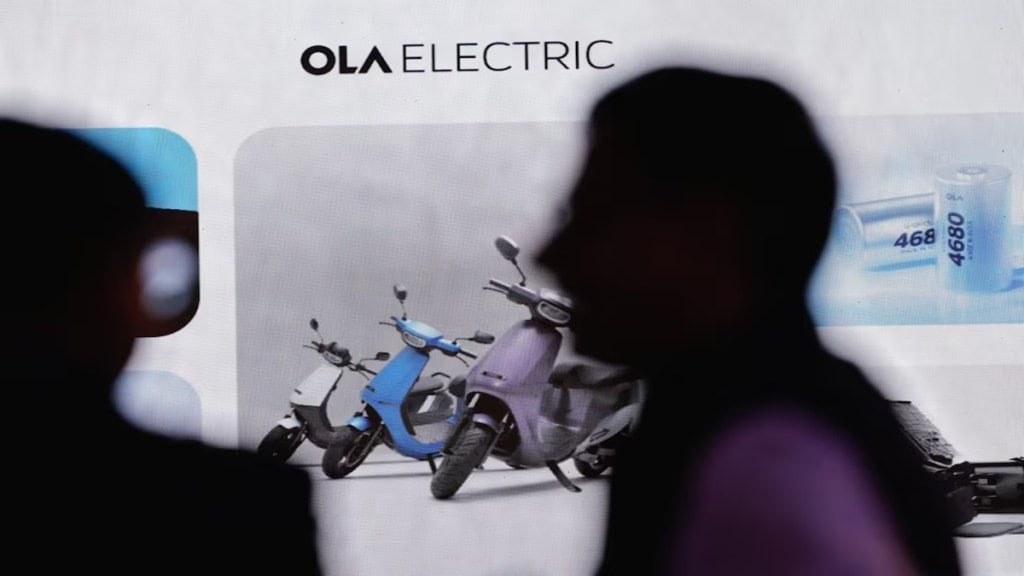Ola Electric has delayed plans to ramp up battery cell manufacturing capacity at its Gigafactory in Tamil Nadu, pointing to slower-than-expected growth in the electric vehicle (EV) market.
The Bengaluru-based EV maker has scaled down its ambitious cell production roadmap, revising its target to 5 GWh until FY29, down from an earlier goal of 20 GWh by mid-2026, with a long-term vision to reach 100 GWh by 2030.
“Given that the EV market has evolved slower in recent quarters, we don’t foresee the need to expand beyond 5 GWh till FY29,” Bhavish Aggarwal, founder, chairman and MD, Ola Electric, told investors.
The delay in scaling up capacity could impact the company’s compliance with commitments under the government’s production-linked incentive (PLI) scheme for advanced chemistry cells (ACC), potentially attracting penalties running into hundreds of crores for missing mandated timelines.
Ola Electric was the first to be selected under the Centre’s ₹18,100-crore ACC-PLI scheme, launched in 2022, to promote domestic battery cell manufacturing. A total of 30 GWh capacity was awarded across three companies — Ola Electric received 20 GWh, Rajesh Exports got 5 GWh, and Reliance New Energy got 5 GWh.
However, even after three years, the selected firms missed their investment and localisation targets in varying degrees, prompting the government to initiate penalty proceedings.
In March, Ola Electric confirmed that it had received a letter from IFCI, the project management agency for the scheme, for missing the first milestone.
At the Sankalp 2024 event, Aggarwal had laid out a bold expansion timeline — starting with 5 GWh production in 2024, scaling up to 20 GWh by 2026, and targeting 100 GWh by 2030. He also announced plans to integrate the indigenously developed 4680-format ‘Bharat Cell’ into Ola vehicles by April 2025.
Currently, the company has a functional cell production capacity of 1.4 GWh and is planning to start deploying the 4680 cells in its EVs from the current quarter. The remaining capacity to reach 5 GWh will be installed over the course of this fiscal, with consumption expected to scale up through FY27.
“At 1.4 GWh, we will be saving at gross margin level but the opex of the cell plant will not be fully leveraged to the scale it is built to. At 5GWh, we will be saving money from procuring outside. We don’t need to go to 20Gwh,” Aggarwal said.
Based on a 4 kWh battery pack per vehicle, a 1.4 GWh capacity can support production of 300,000 vehicles annually, while 5 GWh would cover up to 1,200,000 units — nearly three times Ola’s current annual sales. In FY24, the company sold 359,221 electric scooters and guided for sales between 325,000 to 375,000 units in FY25.
The total project cost for the 5 GWh cell facility is pegged at ₹2,800 crore. Ola has secured funding through an SBI-led consortium, out of which ₹1,500 crore has already been invested. The company expects to complete the installation of the full 5 GWh capacity by the end of FY26, with the bulk of the remaining capex scheduled for this fiscal. Some disbursals may spill over into FY27.
Asked about penalties under the PLI scheme, Aggarwal said, “There is a maximum of about Rs 100 crore of penalty and we are actually accruing that every quarter in our P&L already.” Ola Electric is the only beneficiary to have actually built and operationalised a cell manufacturing plant, and that it intends to work with the government to potentially revisit some of the scheme timelines in the interest of supporting the broader EV ecosystem, he added.
